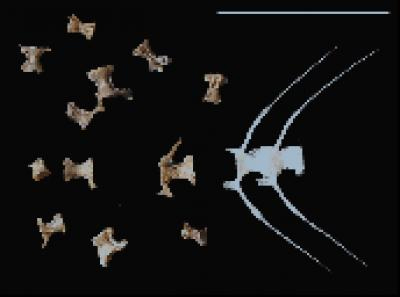Fish Swim North as Seas Warm

As their ocean homes overheat, some fish species are swimming North again for the first time in hundreds of years to seek out cooler waters.
That's according to several studies of archaeological material, tax accounts, church registers and account books of monasteries, which juxtapose marine life as it looked in the distant past with fish data from today's warming world. The results, detailed in 14 papers in a special issue of the journal Fisheries Research, shed light on how global warming is impacting fisheries.
Global and regional climate models predict that air and sea temperatures will rise by about 5.4 degrees Fahrenheit (3 degrees Celsius) in the next 70 to 100 years.
Scientists studying ancient fish bones dated to a prehistoric warm period (between 7,000 and 3,900 B.C.) in Scandinavia found an abundance of warm-water species such as anchovies and black sea bream, which are typically thought to reside much farther south. While these species disappeared from the archaeological record when temperatures cooled, many have returned to the waters around Denmark as temperatures have risen over the last decade.
Another study looked at marine life during one of the coldest recorded periods, the Little Ice Age, from 1675 to 1696. Results showed that the cold-tolerant herring, flounder and eelpout formed the majority of the catches in the Baltic Sea at the time. Warm-water species such as perch and pikeperch, however, were less than 1 percent of the catches. It's these warm-water fish that are now relatively widespread in the Baltic, say the researchers. That suggests the fish have made their way north as the waters became relatively balmy.
Fishing pressures also played a role in the health of fish populations.
Recent increases in sea temperatures have been blamed for the plunge in young cod survival in the North Sea. But this cold-water species was abundant in Scandinavia during the prehistoric warm period. The researchers suggest lower fishing pressure in the past kept cod populations healthy. That means sustainable cod populations could be maintained in the North Sea even during the climate change expected in the 21st century, they say.
Get the world’s most fascinating discoveries delivered straight to your inbox.
- Top 10 Surprising Results of Global Warming
- 101 Amazing Earth Facts
- Image Gallery: Freaky Fish
Jeanna Bryner is managing editor of Scientific American. Previously she was editor in chief of Live Science and, prior to that, an editor at Scholastic's Science World magazine. Bryner has an English degree from Salisbury University, a master's degree in biogeochemistry and environmental sciences from the University of Maryland and a graduate science journalism degree from New York University. She has worked as a biologist in Florida, where she monitored wetlands and did field surveys for endangered species, including the gorgeous Florida Scrub Jay. She also received an ocean sciences journalism fellowship from the Woods Hole Oceanographic Institution. She is a firm believer that science is for everyone and that just about everything can be viewed through the lens of science.


